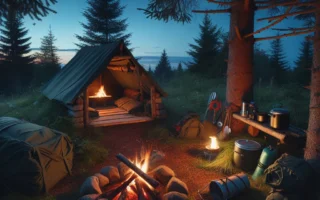Factors to Consider When Choosing the Perfect Campsite
When choosing the perfect campsite, there are several factors to consider to ensure a safe and enjoyable outdoor experience. One of the most important aspects to take into account is the location of the campsite. Consider proximity to water sources, hiking trails, and other recreational activities that are of interest. Additionally, assess the accessibility of the campsite, including the ease of reaching the location and the availability of nearby amenities.
The terrain and environment of the campsite should also be carefully evaluated. Look for level ground for pitching tents, and assess the presence of natural barriers for protection from the elements. It’s crucial to factor in the weather conditions of the area during the time of the camping trip, considering aspects like wind direction, sun exposure, and potential risks such as flash floods or falling debris.
Furthermore, considering the potential wildlife in the area is essential for a safe camping experience. Research the local fauna and take precautions to minimize encounters with wild animals. Adequate preparation for waste management and adhering to Leave No Trace principles should also be part of the decision-making process when selecting a campsite.
Ultimately, each camper’s preferences and needs will influence the choice of the perfect campsite. By taking these factors into consideration, outdoor enthusiasts can make an informed decision to ensure a memorable and enjoyable camping experience.
Top Tips for Finding the Ideal Campsite Location
When it comes to choosing the perfect campsite, the location plays a crucial role in determining the overall experience. Here are some top tips for finding the ideal campsite location:
- Consider the terrain: Look for flat and even ground to set up your tent. Avoid areas that are sloped or rocky, as they can make sleeping uncomfortable.
- Proximity to water: If you’re camping near a lake, river, or stream, ensure that your campsite is not too close to the water’s edge to avoid potential flooding. However, being near a water source can be convenient for cooking, cleaning, and staying hydrated.
- Shade and shelter: Look for a campsite with natural shade from trees, especially if you’re camping during the hot summer months. This can provide relief from the sun and help keep your tent cooler.
- Wind protection: Choose a location that offers some natural barriers against strong winds. Camping behind a hill, large rocks, or dense vegetation can help shield your campsite from gusty conditions.
- Privacy: Seek out a spot that provides a sense of privacy. Being surrounded by nature without neighboring campsites too close can enhance the tranquility of your camping experience.
- Regulations and restrictions: Be mindful of any specific rules or regulations regarding campsite locations in the area you plan to visit. Some places may have designated camping areas or restrictions on where you can set up camp.
By considering these top tips, you can increase the chances of finding the perfect campsite location that meets your needs and enhances your outdoor adventure.
Essential Gear for a Memorable Camping Experience
When planning a camping trip, choosing the right gear is crucial for a comfortable and memorable outdoor experience. The essential gear for a successful camping adventure includes a durable tent, sleeping bags or sleeping pads, a reliable camping stove, cookware, a first aid kit, and proper clothing and footwear. Additionally, having a headlamp or flashlight, a multi-tool, and a portable water filter are essential for convenience and safety. It’s also important to consider the weather conditions and terrain of your campsite when selecting gear, such as a rainfly for the tent or insect repellent for bug-prone areas. By investing in high-quality gear that meets your specific needs, you can ensure a smooth and enjoyable camping experience.



